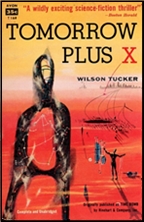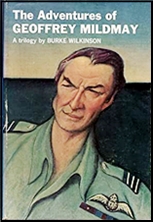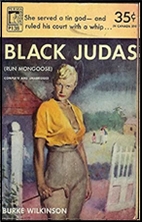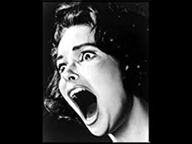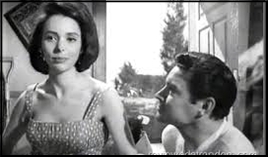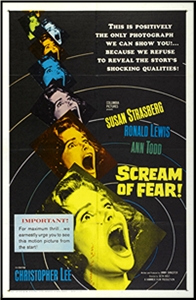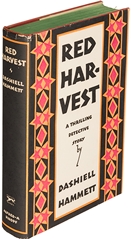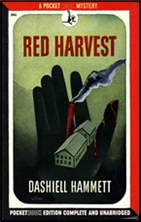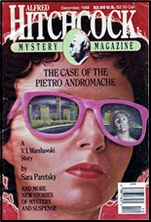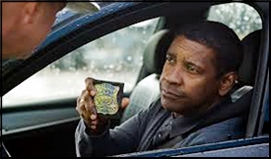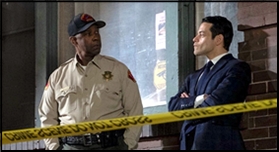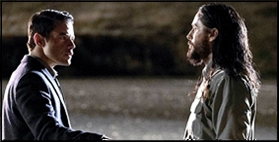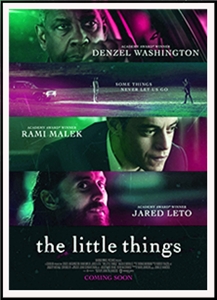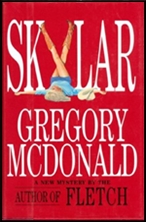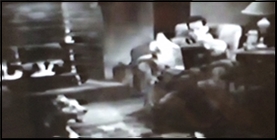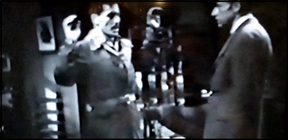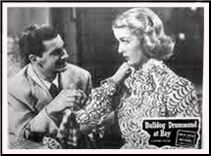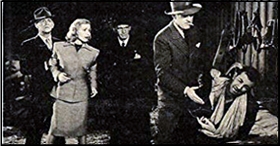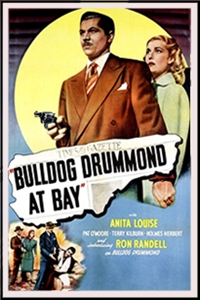FIRST YOU READ, THEN YOU WRITE
by Francis M. Nevins
Around 5:30 A.M. on Saturday, January 9, I lost one of my closest friends in the mystery field. John Lutz was the first writer I met after moving to St. Louis in the early 1970s. At that time, when he was in his early thirties and I in my late twenties, he was known only for his short stories in Ellery Queen, Alfred Hitchcock and other genre magazines. We grew as writers together, our first hardcover novels coming out a year apart.
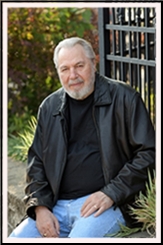
Either more prudent or more cowardly than John, I kept my day job. He chose to write full-time, and soon became very well known indeed, perhaps more for the novel that was turned into the movie SINGLE WHITE FEMALE (1992) than for any other book. He continued to write until about two years ago when Parkinson’s and other health issues ended his long career.
***
He was a native Texan, born in Dallas on September 11, 1939. When he was four his photographer father moved the family to St. Louis. Soon after the end of World War II the elder Lutz opened a tavern which he continued to own and operate for more than twenty years. John graduated from Southwest High School in 1957 and, having not the foggiest notion what he wanted to do with his life, found a job as a movie theater usher. The following year, at age 19, he married Barbara Jean Bradley, who worked at the same theater. The marriage lasted more than sixty years.
A young man who becomes a husband and father before he’s old enough to vote, and who has to support the family putting in long hours at low-level jobs, will rarely have the energy to read for enjoyment, let alone to write, during what little free time he has. John Lutz did. In the early 1960s he was working on various night shifts as a civilian switchboard operator for the St. Louis Police Department, a forklift operator, and a warehouseman for a grocery chain.
By daylight he was reading voraciously — among his favorites at the time were John D. MacDonald, Ross Macdonald, John Collier, Gerald Kersh and Roald Dahl — and pounding out dozens of his own short stories at warp speed, sometimes not even bothering to make a carbon. When or if he slept remains a mystery. “It looked easy,†he said, “so I tried it and found out it wasn’t.â€
None of his stories sold but that, he said after making the grade, was “part of the learning process.†Dozens of rejection slips in a row have aborted countless potential writing careers but John refused to get discouraged. “I saw I could improve, so I kept at it.†After a while the editors who turned down his material began to write supportive comments in their sorry-we-can’t-use-this letters. “That’s a good sign. I’d know I was close to a sale then.â€
Most of his stories were mysteries because he liked to read them and thought they were relatively easy to sell. One frabjous day in early 1966 he opened his mail and out popped a contract. He was still working the night shift at a grocery warehouse when his first story came out. “Thieves’ Honor†(Alfred Hitchcock’s Mystery Magazine, December 1966) opened the door for him, and acceptances soon began pouring in. Six of his tales appeared in 1967, ten in ‘68, five more in ‘69. Within a few years of his unheralded entry into the genre he was being published in Ellery Queen’s Mystery Magazine, Mike Shayne Mystery Magazine, the science-fiction periodical Galaxy, the Diners Club magazine Signature, men’s mags like Knight and Swank and Cavalier.
But the majority of his stories sold to Alfred Hitchcock’s Mystery Magazine and many of those are among his finest. In 1975, his tenth year in the field, eighteen new Lutz tales were published including five (under his own name and four pseudonyms) in a single issue of a single magazine. Now that’s productivity!
Even after 1971 when his first novel was published, John prudently held onto his job as night warehouseman. Eventually he found a better-paying position as a truck driver. In 1973, after being laid off from that job, he decided to take a crack at full-time writing. Two years later he and his wife Barbara and their three children and their dog moved across St. Louis County to a stucco house on a wooded corner lot in suburban Webster Groves, where they lived for the next thirty-odd years.
***
There are no series characters in most of his short stories but there are what one might call series elements. The two that are identified with him are husbands seeking a method of wife-disposal and off-the-wall business organizations. Occasionally, like the creator of two different series detectives who has his sleuths work together on a particular case, he used both signature elements in a single story, for example “Fractions†(Alfred Hitchcock’s Mystery Magazine, June 1972), which is about a company that manipulates unwanted spouses into cheating.
John could create a new business as easily as a rabbit can create another rabbit, but most of his imaginary entities share a common factor. Beneath the impressive facade and the smiles and the handshakes they’re out to take us. He was never all that fond of the self-congratulatory social Darwinism known as the free enterprise system, and even when dealing with businesses that exist in reality he combined a healthy cynicism with imaginative bizarrerie and came up with dandy items like “Mail Order†(Alfred Hitchcock’s Mystery Magazine, April 1975) and “Understanding Electricity†(Alfred Hitchcock’s Mystery Magazine, August 1975), which read as if Kafka had come back from the grave to collaborate with Ralph Nader.
Not all his stories were of this sort, but the best do tend to stem from wildly distinctive premises, like “The Real Shape of the Coast†(Ellery Queen’s Mystery Magazine, June 1971) with its lunatic detective trying to solve a murder in the asylum, or “Dead Man†(Alfred Hitchcock’s Mystery Magazine, March 1974) where we share the last hours of a tycoon locked inside a walk-in vault with a few hours’ air supply as he gropes desperately for a clue to the identity of his own murderer.
His first decade as a writer also saw the publication of his first two novels. THE TRUTH OF THE MATTER (1971) is a paperback about a fugitive couple being stalked across the Midwest by the police but mainly by their own lies and self-deceptions and fears. BUYER BEWARE (1976) introduced St. Louis PI Alo Nudger, whose trademark is a nervous stomach and whose specialty is the legal counter-kidnaping of children kidnaped by non-custodial parents.
Then came four breakthrough books that established him as a writer to contend with. BONEGRINDER (1977) is a bit like JAWS out of water, pitting a rural sheriff against a Bigfoot-like monster terrorizing a small town in the Ozarks. LAZARUS MAN (1979) is a Watergate-era political thriller in which the G. Gordon Liddy figure gets out of prison determined to kill the Nixon figure and his cronies one by one, only to find that they’re just as bent on killing him.
JERICHO MAN (1980) is the first but far from the last novel in which John mined the Lawrence Sanders vein of urban violence, with a tough NYPD captain and a young architect battling the madman who planted dynamite in the foundations of several high-rises when they were under construction. In THE SHADOW MAN (1981) a U.S. Senator is stalked through the Manhattan nightscape by what seems to be a psychotic political assassin with the power to be in several places at once.
John never stopped writing short stories even when he was turning out a novel a year, but his magazine appearances became rarer. A few of his tales from this period featured series characters like Nudger or BONEGRINDER’s Sheriff Billy Wintone, and an occasional non-series story furnished raw material for a later novel, like “The Other Runner†(Ellery Queen’s Mystery Magazine, October 1978), the source for one of the scariest of the murders in LAZARUS MAN a year later.
But stories like “Pure Rotten†(Mike Shayne Mystery Magazine, August 1977) and “Dear Dorie†(Alfred Hitchcock’s Mystery Magazine, September 16, 1981) are as crazy as any he dreamed up in his early days, and “High Stakes†(The Saint Mystery Magazine, June 1984) is one of the most terrifying short stories of suspense since the death of Cornell Woolrich.
The Edgar that Mystery Writers of America awarded him for the Nudger story “Ride the Lightning†(Alfred Hitchcock’s Mystery Magazine, January 1985), was an honor well deserved and long overdue.
In THE EYE (1984) John and co-author Bill Pronzini revisited Lawrence Sanders country and came up with a powerful noir thriller. A wealthy madman living in a Jersey Palisades highrise keeps his balcony telescope trained on the residents of a single block of Manhattan’s West 98th Street. His name is God, and those who violate his commandments he kills.
Assigned to the series of West 98th Street murders is plainclothesman E.L. Oxman, a diligent plodder trapped in a cancerous marriage and desperate for affection on almost any terms. When he takes up with the promiscuous young artist who lives on the murder-plagued block, they both unwittingly nominate themselves as God’s next targets.
Next John revived Alo Nudger but in a somewhat reconfigured version. The character’s ill-advised first name is almost never mentioned, he no longer specializes in the legal kidnaping of children (or anything else), the narration has shifted from first to third person, and the protagonist’s symbiotic relationship with his city has become almost as strong as Spenser’s with Boston or Philip Marlowe’s with L.A.
The new Nudger comes close to being a total loser, plagued by overdue bills and deadbeat clients and a bloodsucking ex-wife and shoddy consumer goods and that old nervous stomach and most of all by his near-paralyzing unaggressiveness and compassion.
His office is above a doughnut shop in a dreary suburb of north St. Louis County. He drives a dented old Volkswagen Beetle that he has trouble finding whenever he parks in a shopping center lot and which tends to die on him for lack of maintenance when he uses it to chase or shadow someone.
He shares the world of Charlie Chaplin’s tramp: whatever can go wrong for him, will. In NIGHTLINES (1984) Nudger encounters a suicidal woman whose life is even more messed up than his own while hunting the slasher who’s been using the phone company’s private equipment-testing lines to make blind dates with his female victims.
RIDE THE LIGHTNING (1987), expanded from his Edgar-winning short story, puts Nudger in a hopeless race against the clock to save a petty criminal from being electrocuted for one crime he may not have committed. The tenth and final novel in the series was OOPS! (1998) which, I immodestly point out, was dedicated to me.
One Nudger book a year left John ample time to launch a second private eye series, this one set in central Florida and featuring a character for whom the perfect movie incarnation would have been Robert Duvall. Fred Carver is a balding fortyish ex-cop whose police career ended when he was kneecapped by a Latino street punk. Vegetating in the beachfront bungalow he bought with his disability pay, Carver is pushed into PI work by friends on the force who want him to stop pitying himself and get on with his life.
In TROPICAL HEAT (1986) Carver is hired by a lovely realtor to find her lover, who in the middle of a solitary continental breakfast on her terrace either walked out on her for no reason, or jumped off a cliff into the ocean, or was pushed off. The search leads to a condominium time-sharing scam, a drug deal (in Florida what else?), an underwater duel with a knife-wielding Marielito, an airboat chase through the Everglades, and an emotional entanglement which neither Carver nor his client is equipped to handle.
The plot is of the bare-bones variety but the meat on those bones is prime noir, saturated with vivid descriptions of the Florida heat. All the subsequent Carver novels had one-word titles: SCORCHER, KISS, FLAME, BLOODFIRE, HOT, SPARK, TORCH, BURN, and finally LIGHTNING (1996). For me the finest of the lot is KISS (1988), one of the most disturbing and downbeat of all PI novels.
Interspersed among his PI books are about sixty short stories published in anthologies of original fiction plus several stand-alone thrillers. SWF SEEKS SAME (1990) is a prime specimen of noir contemporaine in which a young woman in New York advertises for someone to share an apartment with and winds up with the roommate from hell.
This became by far the best known Lutz novel when it was filmed by director Barbet Schroeder as SINGLE WHITE FEMALE (1992), starring Bridget Fonda and Jennifer Jason Leigh.
His novels of the 21st century are about twice as long as any of his previous books and, beginning with THE NIGHT CALLER (2001), noir fiction’s favorite word was in the titles of the first half-dozen. Later books followed the lead of JERICHO MAN and THE EYE, concentrating on protracted duels between big-city cop Frank Quinn and various sociopaths.
In their golden years the Lutzes were living in a lovely house in the affluent suburb of Des Peres that was large enough to accommodate frequent visits from children and grandkids. Their winters were spent in Sarasota and they loved to visit New York for a concentrated week or two of theatergoing.
John continued to write up a storm, filling his pages with the doings of lovers and losers, butchers and victims, fools and clowns, hunters and prey. His final novel was THE HAVANA GAME (2019).
***
Over the decades we interacted often. In my second novel, CORRUPT AND ENSNARE (1978), as The Honorable Jon Lutz he was elevated to the rank of justice on a nameless state’s supreme court, and in my short story “The Spark†he became Lon Judson, an author notorious for his stories about husbands killing their wives.
My fourth novel, THE NINETY MILLION DOLLAR MOUSE (1987), was dedicated to him, and a year later I edited BETTER MOUSETRAPS (1988), his first collection of short stories.
John and Barb and my late wife Patty and I enjoyed many dinners together at a number of restaurants, of which I most fondly remember the dining room of the Hotel Daniele, right near the line separating St. Louis city from the county seat of Clayton, a restaurant I renamed The Auberge and cannibalized for the fine-dining scene in BENEFICIARIES’ REQUIEM (2000).
The last time I saw him was in March 2020, shortly before Covid-19 dominated the world. He said nothing, needed a walker to get around, had lost a lot of weight, but he could still function. That soon changed. He deteriorated over the rest of last year and died a little more than a week into this one.
The only other writers with whom I had such a close and rich relationship were Fred Dannay and Ed Hoch, both of them now long dead. Is it any wonder that as the years pass I feel empty and alone more and more often?
